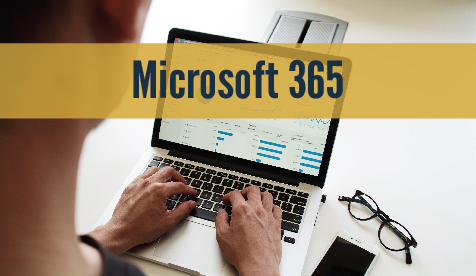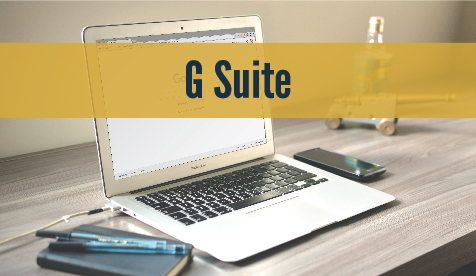Remote Work Resources
- Resources for Employees
- Resources for Students with Limited Internet Access
- Tips for secure Zoom teleconferencing
Resources for Employees
General
Campus-specific
| Columbia | Kansas City | Rolla | St. Louis |
|---|---|---|---|
How much bandwidth do I need for successful videoconferencing?
You'll need a connection capable of download speeds of at least 1.5 megabits per second (Mbps).
What services require a Virtual Private Network (VPN)?
Most of the technology resources available to our faculty, staff and students do not require a VPN. However, some on-campus IT resources require the use of Virtual Private Networking (VPN), a tool that provides encryption between your computer and campus resources. All university laptops come with the Cisco VPN client installed. If you are using your personally owned computer, please contact your IT support team for instructions about downloading the VPN client.
The campus resources that require a VPN when working off campus include:
- Remote Desktop Access to o Workstations that remain on campus
- Access to Network File Shares / Network Drives
- Unified Communications Telephone Self Care (Set up call forwarding and managing voicemail) https://doit.missouri.edu/services/voice/unified-communications-resources/unified-communications-portal/
- Some departments have specialized systems that need VPN.
Will I be able to access MyHR, People Soft and other tools from home?
Most of the tools you use everyday are easily accessed online. PeopleSoft (includes MyHR and Finance), Box, Webmail, Email, Cherwell, Canvas and Jabber all are readily accessible. These tools do not require a Virtual Private Network (VPN) connection, but it is recommended to connect securely through a VPN if you are working and using a public, unsecured wireless network.
Resources for Students with Limited Internet Access
The University of Missouri System is working to help our students secure the resources they need to continue their studies during this unprecedented time. We recognize some of our students live in areas that do not have reliable access to internet services. To address that need, our University and many internet providers are taking steps to help maintain learning continuity. If you are or know of a student who does not have access to internet at their current residence, the following options are available.
Access internet services and mobile/community hotspots via providers
As per the Federal Communications Council agreement, providers will waive late fees, maintain service regardless of payment and open Wi-Fi hotspots. In addition, many providers are offering free Wi-Fi for 60 days as well as enabling mobile hotspots at no charge.
- Altice USA: Free 60 days of Altice Advantage 30 Mbps broadband solution to any new customer household
- AT&T: $10/mo plans to low-income families and free hotspots in many communities
- Charter: Free 60 days of internet
- Comcast: Free 60 days of internet for low-income families and free hotspots in many communities
- Cox: Low-income internet tier with no annual contract
- Sprint: All mobile phones will enable hotspots for 60 days at no extra charge
- T-Mobile: Soon allowing all mobile phones to enable hotspots for 60 days at no extra charge
- Verizon: Free hotspots in many communities
Access Wi-Fi at MU Extension offices
If you are currently searching for internet access, some MU Extension offices have the capacity to provide Wi-Fi while accommodating the need for social distancing within their buildings. We ask that you call the office ahead of time to schedule your visit so we can prepare to serve you with limited contact. In some counties, local officials may close extension offices, so you may also consider offices in counties that are close to you. The county administrative assistant at your chosen location will provide you with the appropriate process for accessing the building and using the Wi-Fi.
Tips for Secure Zoom Teleconferencing
Posted 04/16/2020
Updated 08052020
The use of Zoom makes remote communication possible, yet as its popularity skyrocketed, it became a target for bad actors. We take the security of your academic technology very seriously and want to ensure you have the best technology options for teaching, learning, research, outreach and administrative work.
We feel that Zoom is acting quickly on privacy and security concerns, and we are confident the platform is both safe and effective. We are monitoring Zoom’s updates to security and privacy, and encourage you to take an active role in your account’s security settings to help further prevent and mitigate uninvited guests or inappropriate actions by others in Zoom meetings.
To secure a Zoom session, either a passcode or waiting room is required on new Zoom meetings created in the umsystem.zoom.us and umsystemprotected.zoom.us domains. Beginning on Aug. 6, 2020, security options enabling waiting rooms and passcodes will be enabled by default. Users can choose which of the two security options will work best for that particular meeting by unchecking one setting or the other. Please refer to the Managing Zoom Security Options user guide for more details on navigating Zoom following this change and other recent security updates.
Please consider the following steps to help mitigate teleconference hijacking threats:
- Do not share meeting links on public forums or social media. Provide the link directly to specific people.
- Enable passwords for your meetings. Do not share the password publicly.
- Use Zoom waiting rooms. Hosts allow waiting participants into the meeting.
- Do not disable the default screensharing setting that is set to “Host Only” to allow participants to share their screens until you are sure only the intended participants are present.
- Make sure you are using the most updated version of Zoom (and all software applications) on all your devices.
The University of Missouri System will continue to keep updated the information about tools and resources on keeplearning.umsystem.edu.
Hear from Zoom’s CEO directly; he shared an update about their security measures as well as plans to monitor and review over the next 90 days.
Reviewed 2020-08-18

